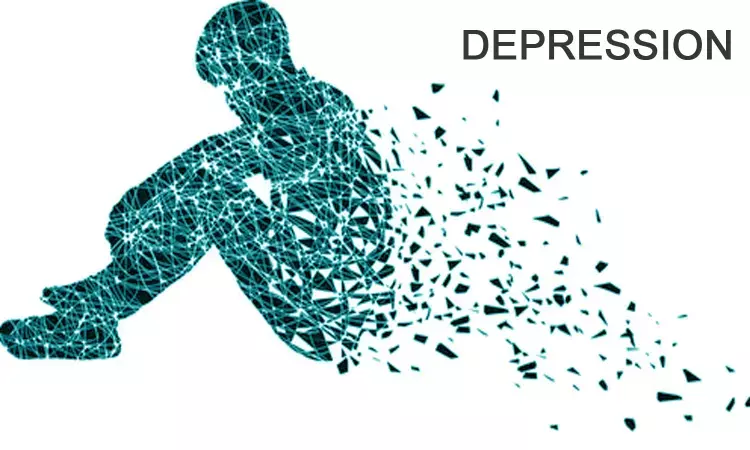- Home
- Medical news & Guidelines
- Anesthesiology
- Cardiology and CTVS
- Critical Care
- Dentistry
- Dermatology
- Diabetes and Endocrinology
- ENT
- Gastroenterology
- Medicine
- Nephrology
- Neurology
- Obstretics-Gynaecology
- Oncology
- Ophthalmology
- Orthopaedics
- Pediatrics-Neonatology
- Psychiatry
- Pulmonology
- Radiology
- Surgery
- Urology
- Laboratory Medicine
- Diet
- Nursing
- Paramedical
- Physiotherapy
- Health news
- Fact Check
- Bone Health Fact Check
- Brain Health Fact Check
- Cancer Related Fact Check
- Child Care Fact Check
- Dental and oral health fact check
- Diabetes and metabolic health fact check
- Diet and Nutrition Fact Check
- Eye and ENT Care Fact Check
- Fitness fact check
- Gut health fact check
- Heart health fact check
- Kidney health fact check
- Medical education fact check
- Men's health fact check
- Respiratory fact check
- Skin and hair care fact check
- Vaccine and Immunization fact check
- Women's health fact check
- AYUSH
- State News
- Andaman and Nicobar Islands
- Andhra Pradesh
- Arunachal Pradesh
- Assam
- Bihar
- Chandigarh
- Chattisgarh
- Dadra and Nagar Haveli
- Daman and Diu
- Delhi
- Goa
- Gujarat
- Haryana
- Himachal Pradesh
- Jammu & Kashmir
- Jharkhand
- Karnataka
- Kerala
- Ladakh
- Lakshadweep
- Madhya Pradesh
- Maharashtra
- Manipur
- Meghalaya
- Mizoram
- Nagaland
- Odisha
- Puducherry
- Punjab
- Rajasthan
- Sikkim
- Tamil Nadu
- Telangana
- Tripura
- Uttar Pradesh
- Uttrakhand
- West Bengal
- Medical Education
- Industry
Major Depressive Disorder Benefits from Adding D-cycloserine to Brain Stimulation: JAMA

CANADA: A randomized study published in JAMA Psychiatry demonstrated that D-cycloserine as an adjunctive may improve the outcomes of intermittent theta-burst stimulation (iTBS) for people with major depressive disorder.
Synaptic plasticity is hypothesized to have a role in the antidepressant effects of TMS regimens for major depressive disorder (MDD). Although it is known that the N-methyl-D-aspartate (NMDA)-receptor is a requirement for the theta-burst stimulation (TBS) protocol synaptic plasticity, it is not known whether boosting NMDA-receptor signaling enhances MDD treatment outcomes.
The NMDA-receptor partial-agonist D-cycloserine, which is frequently used to treat urinary tract infections, was mentioned by the authors as having been previously investigated for the treatment of traumatic stress disorder, anxiety, and obsessive-compulsive disorder. They noted that meta-analyses for these diseases "show that DCS is linked with a small but statistically meaningful effectiveness signal, despite contradictory results across studies," and suggested that prior null results might have been due to a poor dose.
D-cycloserine, a low-dose NMDA-receptor partial agonist, was tested by Alexander McGirr and colleagues to determine if it would improve the effectiveness of intermittent TBS (iTBS) treatment for MDD.
25 major depressive disorder sufferers, most of whom were female with a mean age of 41, were randomly assigned to each group in this single-site, double-blind trial, which was conducted from November 2019 to December 2020. In the placebo group, 20% and in the D-cycloserine group, 32% of participants had previously attempted suicide. A major depressive episode with a score of 18 or higher on the 17-item Hamilton Depression Rating Scale, a Young Mania Rating Scale score of 8 or below, and normal blood tests were required for inclusion. The COOL-B70 coil and MagVenture's MagPro X100 stimulator were used to deliver iTBS. Beam F3 was used to deliver 600 pulses each session in 20 trains of triplets at 50 Hz repeated at 5 Hz — 2 seconds on, 8 seconds off — to the left dorsolateral prefrontal cortex, which was the objective of the stimulation. Over the course of the 4-week experiment, participants got daily treatments Monday through Friday for a total of 20 sessions. D-cycloserine was administered to those in the D-cycloserine group for the first two weeks of iTBS, followed by weeks three and four of iTBS alone.
Key results of the trial:
- In comparison to those receiving iTBS plus placebo, those who took the antibiotic during the first two weeks of a four-week course of iTBS experienced higher reductions in depression symptoms (mean difference -6.15, 95% CI -2.43 to -9.88).
- Clinical response and remission rates were higher in the D-cycloserine group of patients than in the iTBS group at 4 weeks (73.9% vs. 29.3%; OR 6.88, 95% CI 1.91-24.77, P=0.003).
- In addition to reduced self-reported anxiety symptoms, individuals who received the antibiotic had lower Clinical Global Impression (CGI)-severity ratings and higher CGI-improvement scores.
- Comparatively, 9 of 25 participants (36%) in the iTBS plus DCS [D-cycloserine] group and 15 of 25 participants (60%) in the iTBS plus placebo group plateaued or had their MADRS scores decline.
Since their study was small and only conducted at one location, the authors came to the conclusion that "replication in a larger multisite trial is warranted, as well as future studies into intersectional methods with various dosage regimens and precision medicine targeting approaches."
REFERENCE
Cole J, Sohn MN, Harris AD, Bray SL, Patten SB, McGirr A. Efficacy of Adjunctive D-Cycloserine to Intermittent Theta-Burst Stimulation for Major Depressive Disorder: A Randomized Clinical Trial. JAMA Psychiatry. Published online October 12, 2022. doi:10.1001/jamapsychiatry.2022.3255
Dr Kamal Kant Kohli-MBBS, DTCD- a chest specialist with more than 30 years of practice and a flair for writing clinical articles, Dr Kamal Kant Kohli joined Medical Dialogues as a Chief Editor of Medical News. Besides writing articles, as an editor, he proofreads and verifies all the medical content published on Medical Dialogues including those coming from journals, studies,medical conferences,guidelines etc. Email: drkohli@medicaldialogues.in. Contact no. 011-43720751


